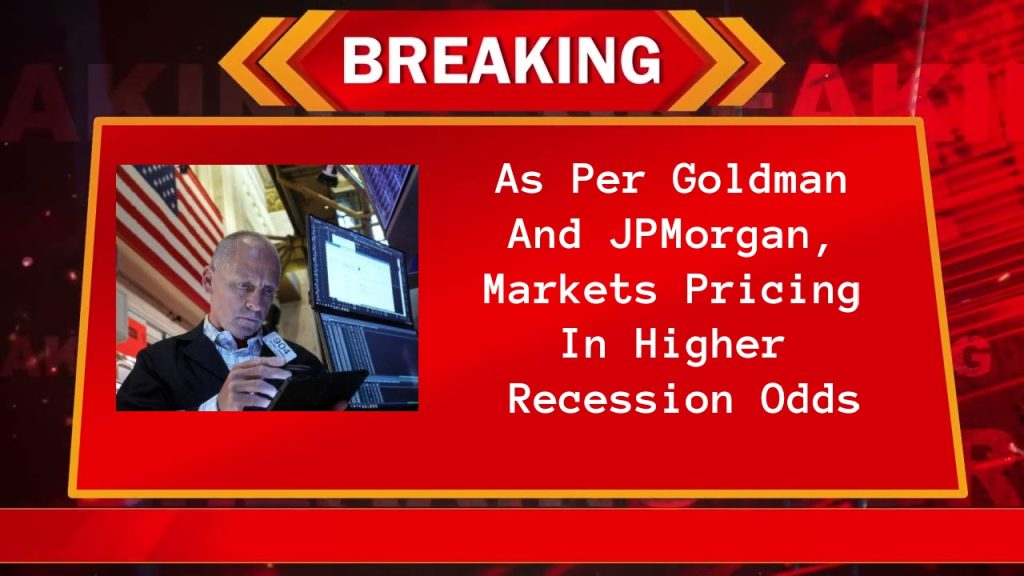Following the market chaos that temporarily triggered alarm on Wall Street last week, financial markets are indicating a larger likelihood of an impending recession. It is still considered an outside chance. However, models developed by Goldman Sachs Group Inc and JPMorgan Chase & Co indicate that the market-implied chances of an economic downturn have increased significantly, judging by signals in the US bond market and, to a lesser extent, the outcome of stocks that are severely sensitive to the ups and downs of the business cycle.
Goldman’s Indication Towards Recession
According to Goldman, the combined equity and bond markets are now projecting a 41% chance of a US recession, up from 29% in April. This increase is primarily due to market bets on a faster rate-cutting pace from the Federal Reserve (Fed) and the underperformance of stocks, which are extremely vulnerable to changes in the business cycle. A comparable JPMorgan model estimates that because of the significant repricing of US Treasuries, the odds have increased to 31% from 20% since the end of March.
JPMorgan’s Indication Towards Recession
According to strategist Nikolaos Panigirtzoglou of JPMorgan, the bank’s model’s recession risk is a reflection of the extent of rate cuts that have been factored in since the jobs report last month revealed a slowdown in job creation. The likelihood of a recession, according to the stock market, is now one in five, up from zero when stocks were setting new records earlier in the year, he said.
The less-than-expected job-growth data released on August 2 stoked worries about a downturn by fueling the notion that the Fed has been holding off on loosening monetary policy for too long. Even if the figures indicated a decline in hiring, the monthly rate was still above 100,000, and some indicators of the state of the economy don’t point to an impending recession. For instance, small-business optimism in the US recently rose to a two-year high in July. Furthermore, the consensus of analysts’ projections hasn’t changed significantly from its April level of roughly 70% in 2023 to 30% now.
Losses Of Nasdaq And S&P
While the tech-heavy Nasdaq 100 has dropped more than 8% from its top, the S&P 500 has still lost more than 4% of its value since reaching its record high in mid-July. The increased likelihood of a recession that stocks have in the Goldman and JPMorgan models is priced in by rate markets. Goldman’s models indicate that the 12-month forward implied shift in the Fed’s benchmark rate is signaling a 92% odds of a recession in the upcoming year, while JPMorgan’s analysis of the move in five-year Treasury yields indicates a 58% risk of an economic downturn.

